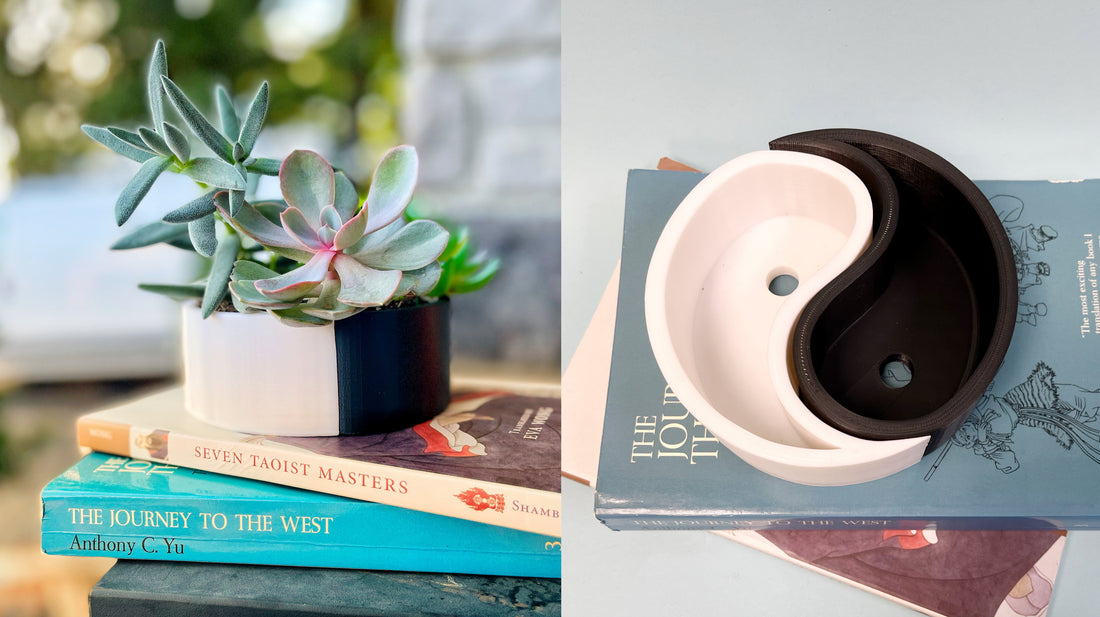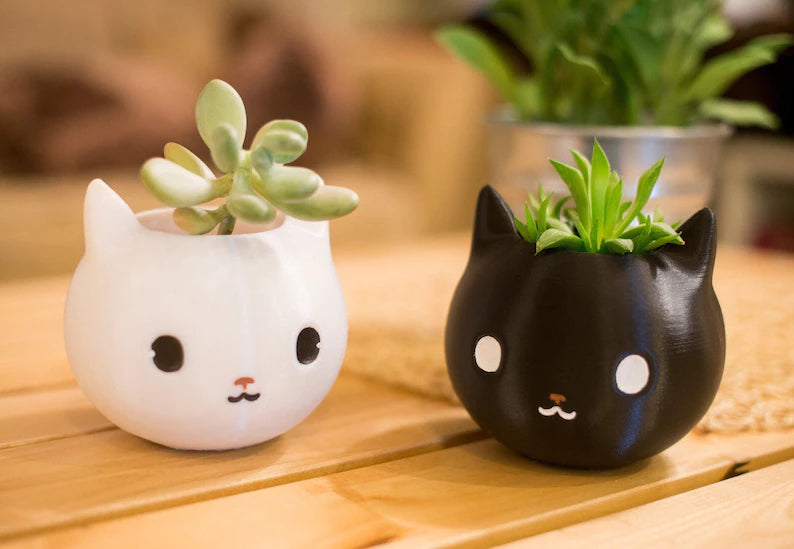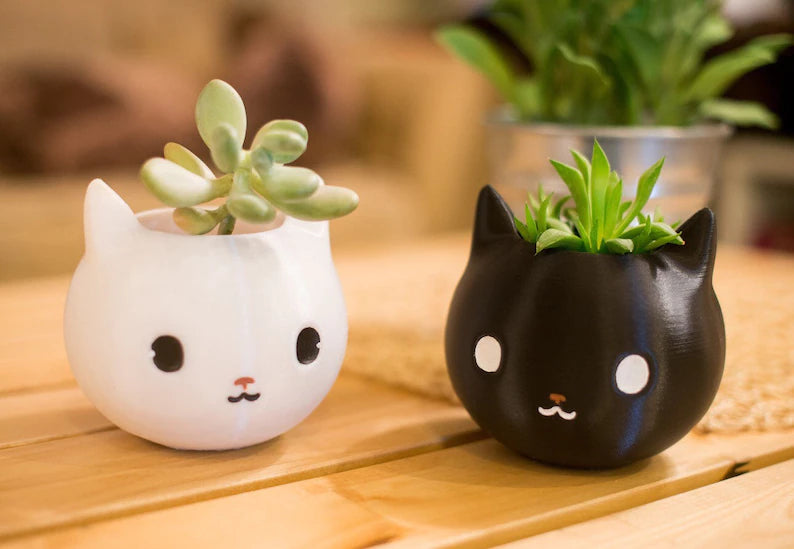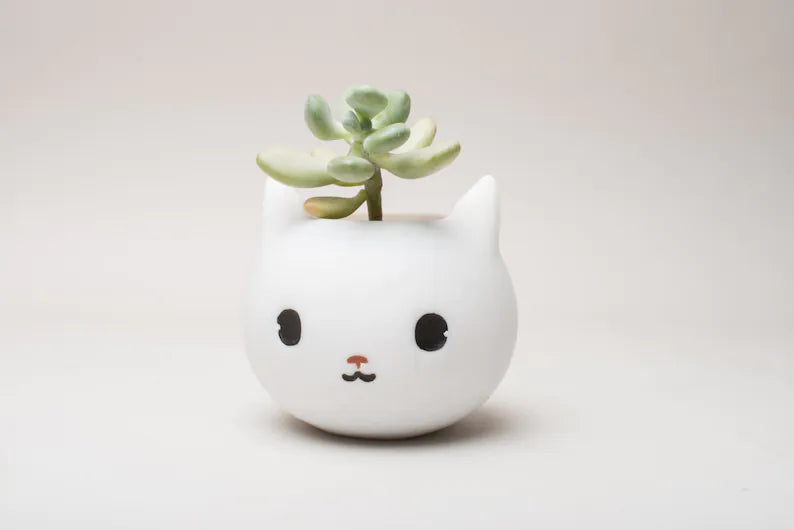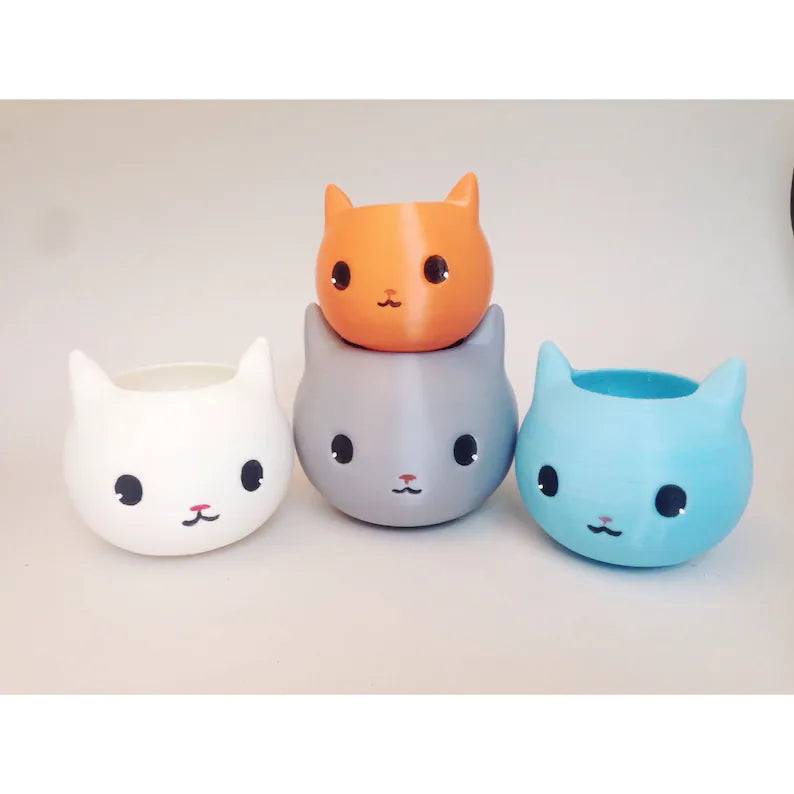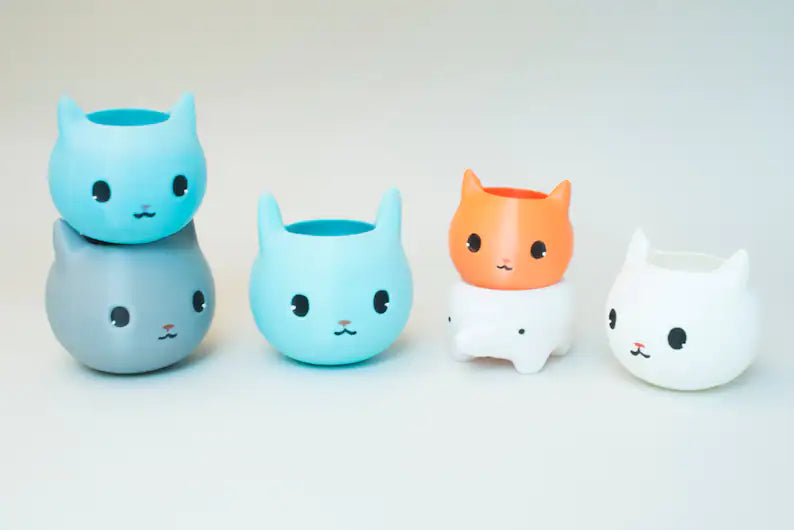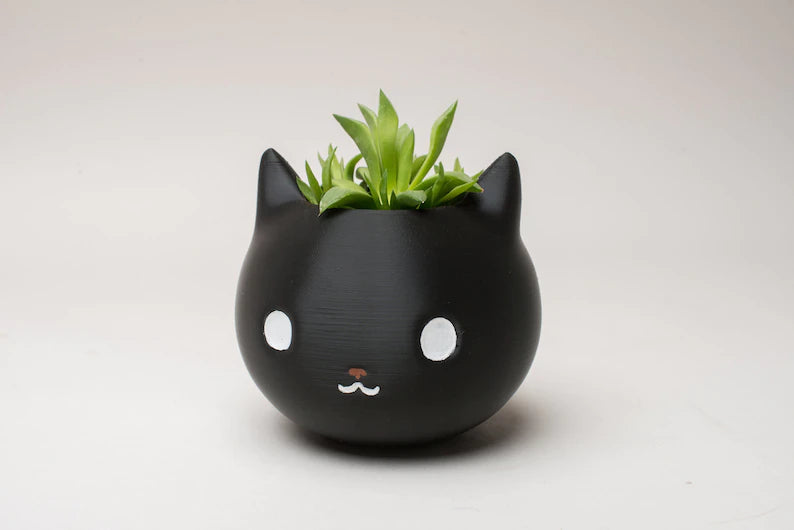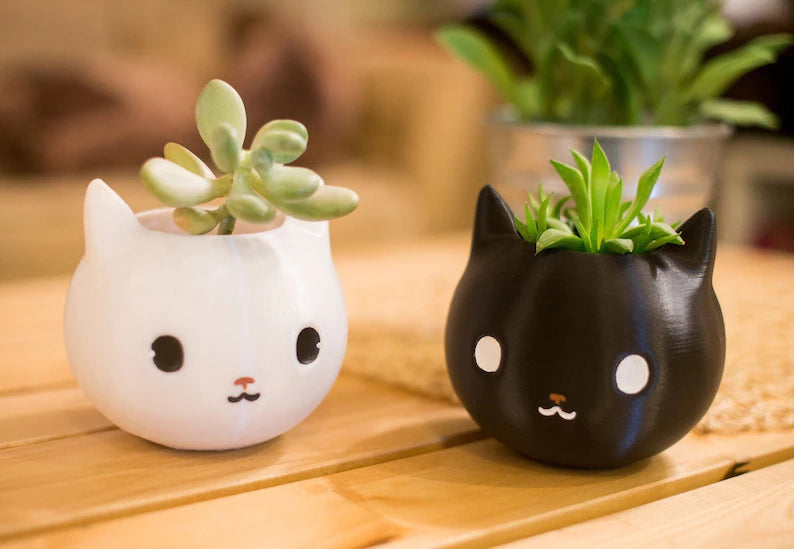( Cat planter designed by Meow3D, featured in BuzzFeed and Apartment Therapy.)
Polylactic Acid (PLA) is the most popular 3D printing material and it’s the only printing filament we use in Meow3D. Why? It’s biodegradable, which means that it will naturally break down over time when you dispose it. It does not contain harmful chemicals that will leach into the soil as it breaks down, preventing long-term damage to plants and animals. As a brand who cares about environmental sustainability, we’re trying to reduce negative environmental impact resulting from our operations as much as possible.
So here comes the question, is pla a safe material to grow your plant baby’s?
The answer is yes.
Another thing to be aware of is that although pla plastic is biodegradable, it doesn’t mean it will start to break down in a few years. It will last as least decade before anything.
If your PLA-printed plant pot is placed in direct sunlight, it is better to apply Krylon UV Resistant Clear Gloss from Amazon as it will protect it from UV rays making it last longer.
If you are ready to plant veggies and flower in raised flower bed, The safest wood to use for vegetable container gardens is cedar. It resists rot and lasts a long time, but it is pricey. You can safely use other kinds of untreated hardwood to build raised beds, but your project will rot and warp in a few years, depending on the wood. One of the things about wood raised flower bed is, please don’t used the treated wood. The chemical can easily leach into the soil and absorbed by the plants.
Plastic lumber is durable lumber that looks a lot like wood. The plastics and composites used to make the product vary by manufacturer. They may or may not be food safe.
if you already have the older, arsenic-treated wood in your garden, don’t panic. Plants will not take up arsenic unless the soils are deficient in phosphorus. That is not a problem for gardeners who use compost generously. As for the new copper-based wood treatments, Brown believes the actual risk is minimal. First of all, if plants take up too much copper, they will die before a gardener can eat them. In addition, if homegrown vegetables make up a small percentage of the diet, exposure to any metal taken up is insignificant. Do not use copper near ponds and streams because it is toxic to aquatic life.
